Read More
Biggest mistakes DIY home painters make
- Originally published by The Courier Mail and written by Kate McIntyre (Dec 6 2023) – LINK
Homeowners are making a series of costly mistakes when it comes to painting their homes, with many forking out on good quality paint only to get poor results.
Experts say not trying out chosen colours under different lighting, removing the tape after the paint has dried and using inferior tools are some of the most common mistakes made by DIY painters leading to damaged or patchy paintwork.
The revelations come as bright colours grow in popularity across Australian homes.
Viva Magenta 18 was recently named Pantone’s Colour of the Year while retro shades of purple and blue have shaped two of the colour palettes in Haymes Paint Colour Library for 2024.
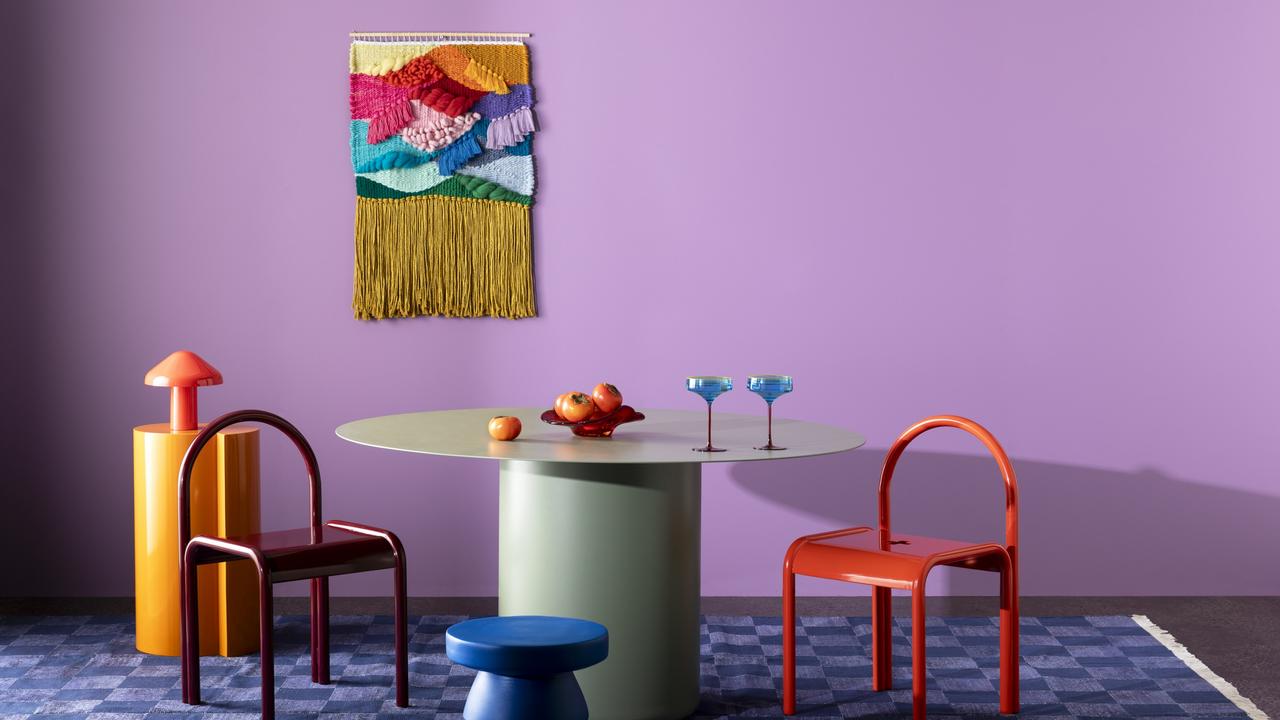
Haymes Paint’s Retro Mash Up colour palette is one of six palettes to feature in the 2024 ‘Origins’ colour library. Picture: Haymes
Experts say by following a few simple tips it’s possible to get a professional finish and a colour combination that looks just right in any home.
AVOID COLOUR MISTAKES
Dulux Colour and Communications manager Andrea Lucena-Orr says to avoid colour mistakes it is essential to “live” with a sample colour on the wall for at least three days.
“One of the biggest things people don’t consider is how much light and other colours from existing fittings and furnishings can impact the paint colour,” she says. “Do you have fluorescent lighting? Is the room you’re painting north facing?”
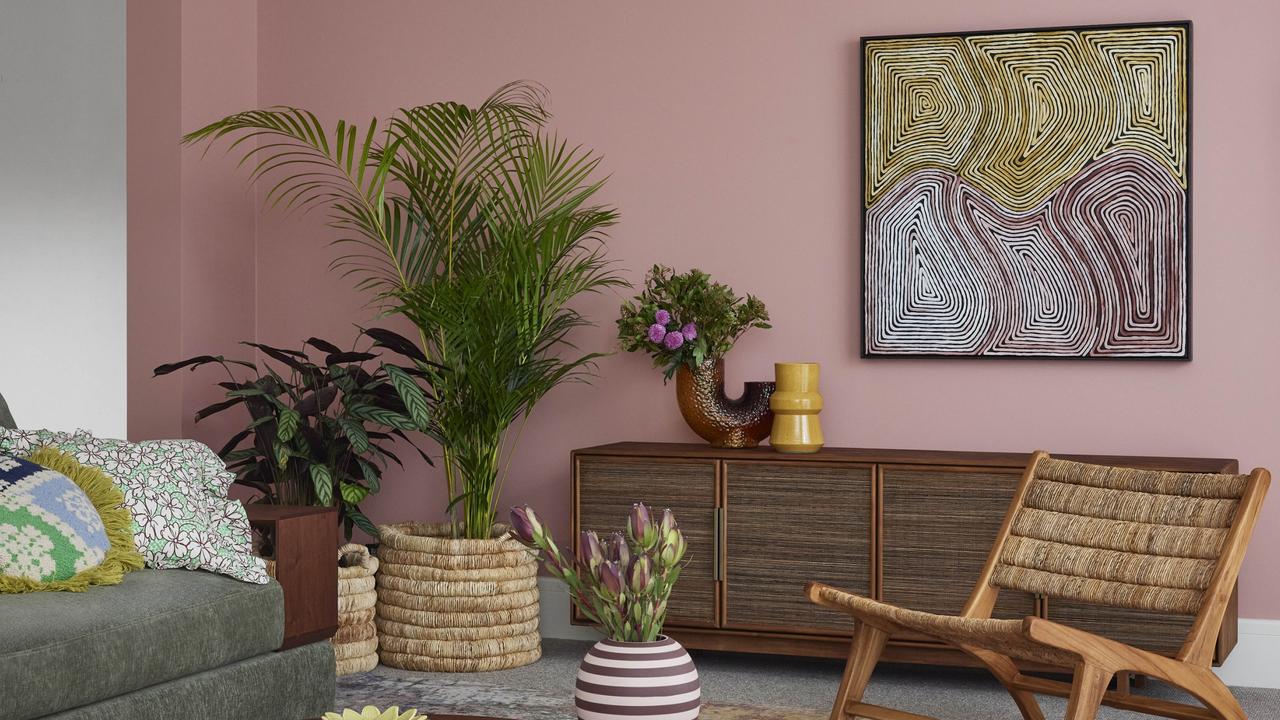
Consider how furniture and decor will look with your colour of choice. Picture: Dulux
CHOOSE THE RIGHT COLOUR
Haymes Paint colour consultant manager Erin Hearns says she asks customers to think about places that bring them joy before embarking on a colour-choosing journey.
“You can look at holidays that you’ve been on and take inspiration from anywhere really and bring it into your home to make it feel beautiful all the time,” she says.
BRIGHTEN A NEUTRAL SPACE
Those who want to move beyond the familiar shades of cream and beige could start by making baby steps.
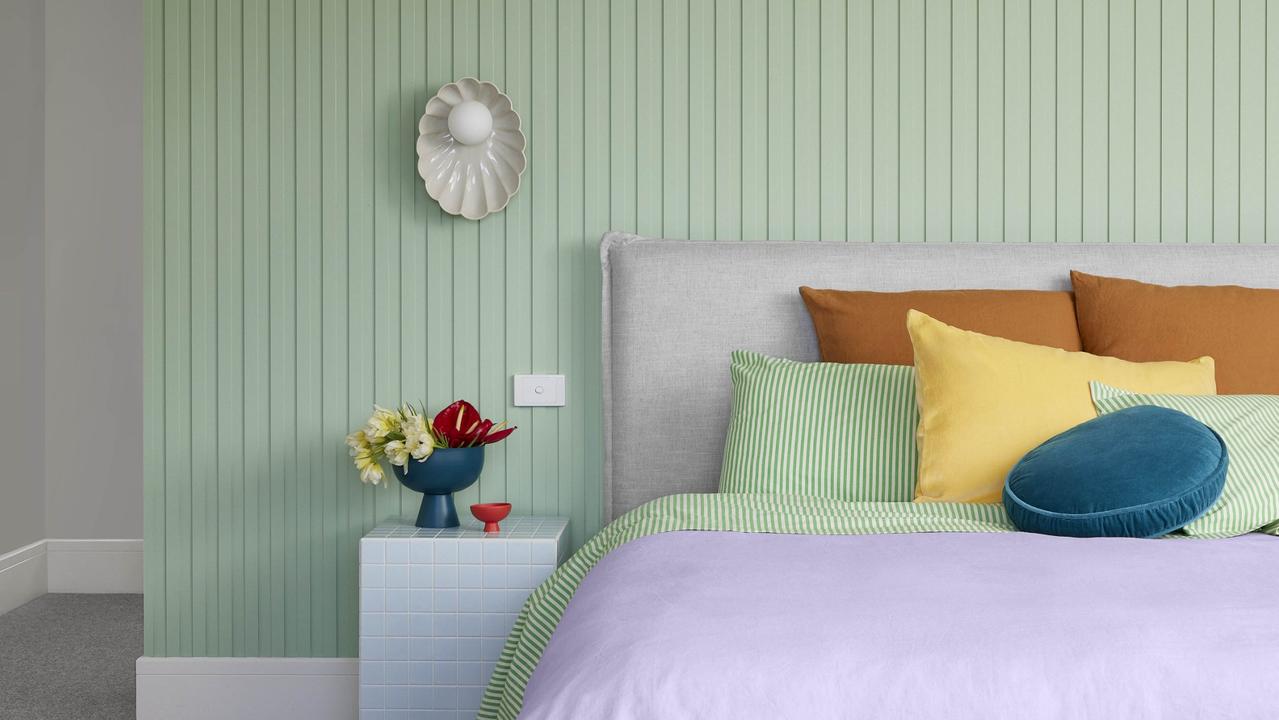
A feature wall is a great way to introduce splashes of colour, like in this example using the Muse palette from the 2024 Dulux Colour Forecast. Picture: Dulux
Social media design sensations Josh Jessup and Matt Moss suggest spacing a chosen colour around a room rather than going all out.
“Don’t colour clump,” Jessup says. “Start off small, it’s all about just starting and mixing it throughout the room.”
“Another thing we love doing is mixing shades of one colour.”
“We mix bold and pastel. I think that’s a really good way to add colour if you’re not as confident or don’t want to do too many colours.”

Social media design sensations Josh Jessup and Matt Moss. Picture: Amelia Stanwix/Haymes
PLAY IT SAFE
Adairs senior customer relationship and loyalty manager Emma Porter says upcycling an existing piece of furniture by repainting it is an easy way to play it safe when bringing colour into an otherwise neutral-toned space.
“It’s all about working out what you love and what you don’t like,” she says.
GET THE RIGHT TOOLS
Bunnings paint buyer Matt Wagner Smith says it is crucial to invest in the right tools for the job.

Don’t skimp when it comes to buying brushes and rollers.
“Often people will spend on good quality paint but don’t consider the paint accessories they are buying and end up with poor quality tools that give them an average quality finish,” he says. “Investing in both your paint and paint tools will ensure you get a great finish.”
He suggests buying a good quality paint roller and tray as well as a small angled brush, a gap filler, some abrasive paper, a paint scraper, a paint stirrer and a ladder. You should also have plenty of sugar soap handy as well as drop sheets, painter’s tape, primer and enough paint required for the job, he says.
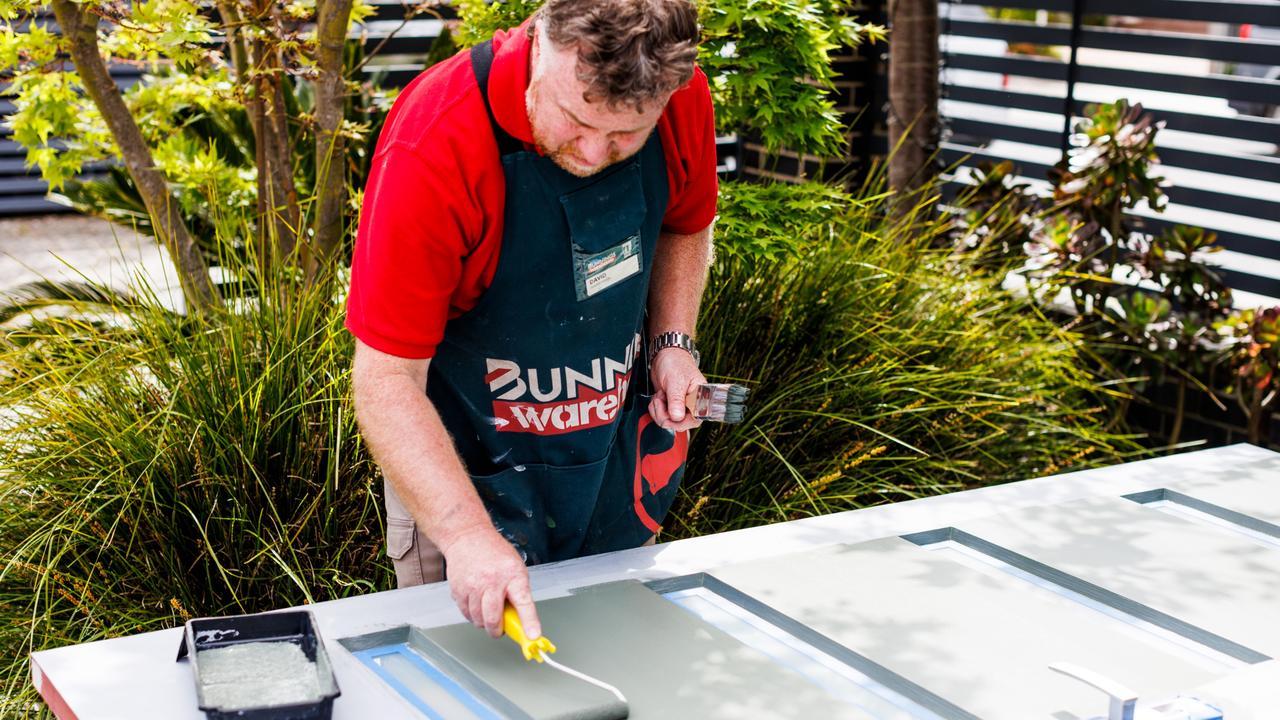
Painting your doors could bring a whole new style to your home. Picture: Bunnings
PREP THE WALLS
Washing and preparing the walls first is a make or break step in any home painting job, says Lucena-Orr.
After covering the floor with drop sheets and masking off windows and skirting boards with painter’s tape, it’s important to fill in surface cracks or holes before spot-priming.
“If you’re painting a glossy surface, you’ll need to lightly sand the area to a dull finish,” she says.
For unpainted plasterboard, brick, cement sheet or bare timber, it is essential to fully coat the surface in primer before painting.
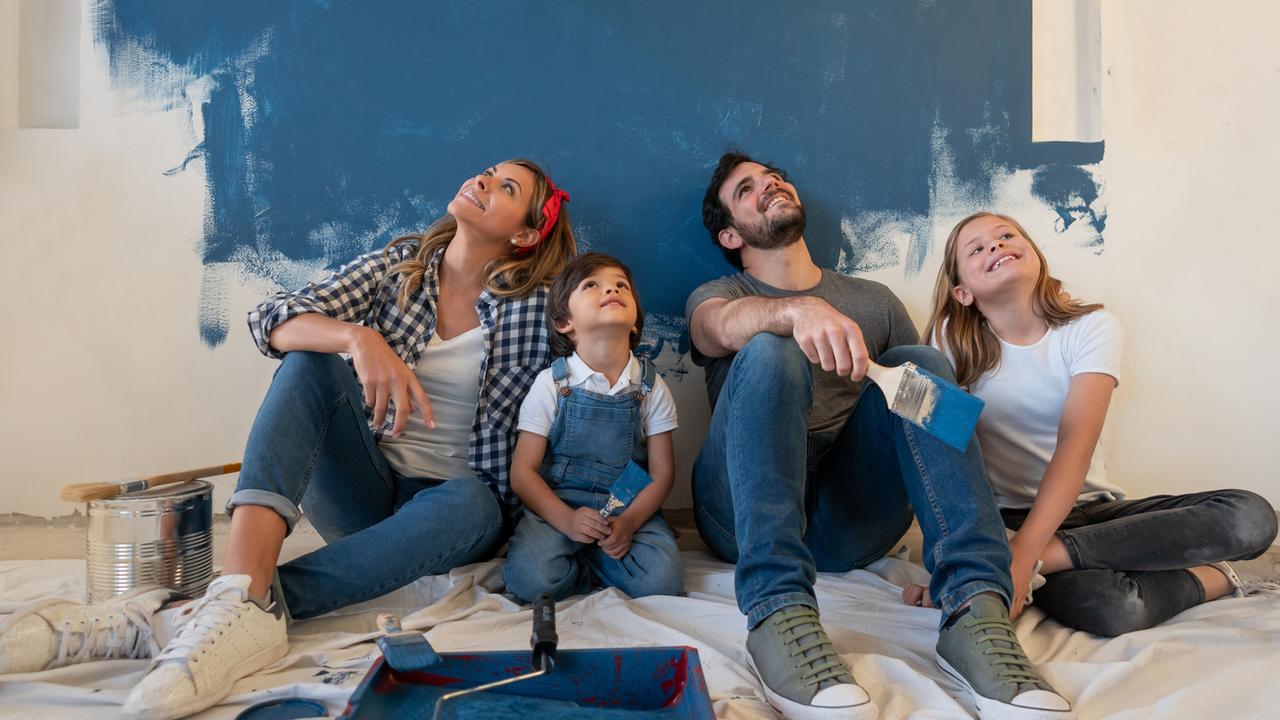
Getting the kids involved could be a bit risky.
PAINTING THE RIGHT WAY
After applying an undercoat, it’s time to “cut in” by using an angled brush to paint around the edges of the wall, the power-points, the window seals and the door frames, Wagner Smith said.
Then it’s a matter of applying the top coat using a paint roller on an extension pole before peeling off the tape while the paint is still damp.
“If you let paint completely dry it can lift the fresh paint,” he said.